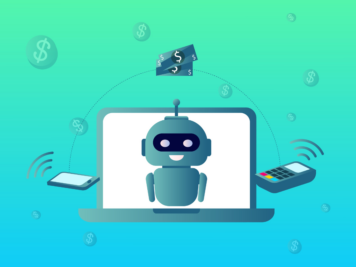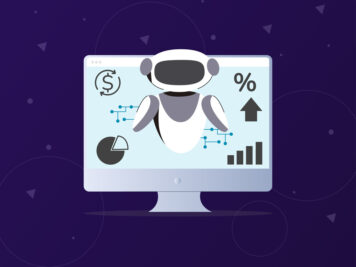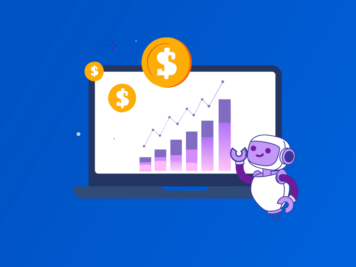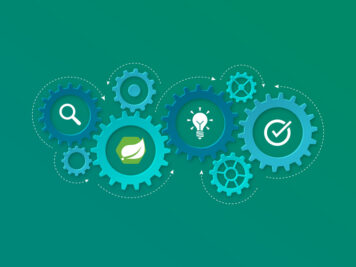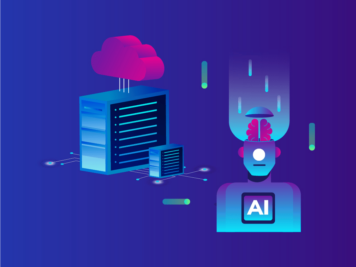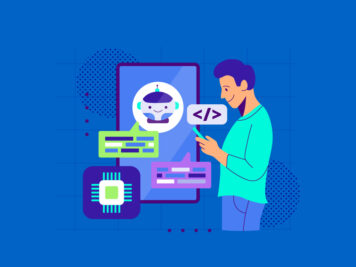Data silos are costing the global economy $3.1 trillion annually. The global number is quite troubling. But the granular result is even more unsettling. The same study by IDC Market Research further reveals that these silos are eating up around 30% of a company’s annual revenue. These silos are a by-product of rapid digital proliferation during and after the pandemic. Barriers emerged between departments and made information sharing and problem-solving difficult. However, the recent advancements in agentic AI platforms may change rescue companies from this silo situation.
Autonomous AI agents form an agentic AI system. The system acts like a single source of truth and discovers, processes, and integrates data from different sources without human intervention. Unlike traditional AI models, Agentic AI can learn, adapt, and act dynamically. This process helps the system break down silos and ensure businesses benefit from cross-functional intelligence.
But agentic AI or multi-agent AI systems cannot function properly unless the silos affecting the enterprises are properly identified. Understanding the challenges of implementing agentic AI is equally important. My target is to cover both so that planning and deploying agentic AI becomes easier for companies.
The Challenge of Operational Silos in Modern Enterprises
According to Cambridge Dictionary, the word ‘silo’ means a large, round tower on a farm for storing grain or winter food for cattle or a large underground facility to store missiles. In 1988, Phil Ensor, a manager of Goodyear, first used the word silo (Functional Silo Syndrome) to describe organizational structure. Jack Welch then popularized the term to propose his idea of boundaryless organizations inspired by globalization and technology.
That dream never materialized. The irony is that technology is now largely responsible for creating organizational silos.
Businesses struggle with three types of silos- organizational, information, and silo mentality. An organizational silo is where departments or teams operate independently without much communication with others. This has become outrageously problematic after the pandemic. An information or data silo happens when knowledge gets trapped within a department. The third one is more common. Silo mentality is when a department prioritizes its own interests or goals over organizational growth.
Inefficient and ineffective communication channels create silos. Sometimes, mismatched data management systems are the reason. But silos can also happen due to a culture that promotes departmental autonomy or a rigid hierarchical structure that creates barriers in communications.
When silos hit, companies struggle with poor data visibility. Employees waste time searching for information or work with incomplete data. Innovations stop. Silos affect strategies and boardroom processes. Decision-making hits a snag. Sometimes, two teams work on the same thing, and that duplicate effort wastes vital resources. Silos can also lead to tribalism or tunnel visions. All these together create bottlenecks for growth and companies stop scaling.
Understanding Agentic AI: A New Paradigm for Collaboration
“20 years ago, all of this [artificial intelligence] was science fiction. 10 years ago, it was a dream. Today, we are living it.”- Jenseng Huang, CEO of NVIDIA
The AI landscape is evolving fast. The transition from GenAI to agentic AI took a little over a year. Agentic AI is a system that can work autonomously without constant human guidance. The system understands the user’s objective and the problem’s context before starting its execution process. However, this requires autonomous decision-making and action, which it does by combining different machine learning models, natural language processing, and automation.
Agentic AI systems can work like generative AI models, but they are not the same. They focus more on making decisions, optimizing objectives, and completing complex sequences of activities. They do it by independently searching the web and initiating workflows to complete tasks.
Agentic AI celebrates Adam Smith’s “division of labor.” Each agent in the system has a specific skill set, and their specialization increases efficiency. Some agents work as managers to orchestrate the entire flow, while others get down to a granular level to solve their assigned tasks. Their judgment and execution capabilities make them perfect for experimentation and innovation. Multi-agent AI models can also do in-depth research, which makes them ideal for better decision-making.
One thing where businesses can benefit from agentic AI systems is the latter’s proactiveness. Multi-agent AIs do not wait for human prompts. They understand the requirements and try to deliver the maximum result. At the same time, they can collaborate with human beings to refine their outcomes. For instance, SciAgent is an agentic AI system developed by MIT engineers to develop research plans. But it also has a Critic agent to review the plans and suggest improvements. Manus takes the process a notch up. It gives the user complete visibility about how it is proceeding so that the user can intervene at any point in time for a course correction.
Let me elaborate on this with a healthcare example. In a healthcare system, time is crucial. For instance, a patient’s condition can fluctuate rapidly. The agentic system can have AI agents to monitor the patient’s condition. A second agent can adjust treatment recommendations per the monitoring data changes. A third one can suggest actions to the doctor using a chatbot. This type of collaboration can deliver effective solutions in real time.
Businesses can directly benefit from the adaptability of agentic AI systems. Agents in the system learn from feedback and adjust their behavior. They can improve continuously, which can help with scaling plans. Agents can also interact with external tools or databases. This is a game-changer when it comes to making quick decisions and taking appropriate actions. Its autonomous nature also helps in maintaining long-term goals.
How Agentic AI Platforms Break Down Silos
Agentic AI can improve three things to break the silos in an organization- improving data integration, ensuring seamless cross-functional collaboration, and accelerating decision-making.
Improving Data Integration
Agentic AI platforms use specialized AI agents—each with a distinct role. They connect directly to existing software systems, pulling data from CRMs, marketing tools, customer support platforms, and analytics databases.
Each agent independently gathers, interprets, and organizes data. Then, seamlessly, they collaborate to combine these insights into one unified picture.
Let’s think of a real-life case. Imagine the data from scattered sales, marketing, and customer support data are scattered. Agentic AI platforms can make their data visible in a single view. This will give marketing a clear idea about what issues customers face. Sales will be able to identify clear opportunities based on support interactions, and customer support will understand every customer’s history instantly.
Aidoc can be studied as a real-life example. The company implements agentic automation to review medical imaging data to detect critical conditions in real-time and help radiologists.
Data fabric can be the core of agentic AI systems. Integrating, enriching, curating, and managing data will become incredibly important for giving AI agents the context they need. Data fabric can be the backbone that connects everything—pulling together different sources and structuring them clearly. That way, agents can understand and act on information more accurately.
Ensuring Seamless Cross-Functional Collaboration
Agentic AI platforms make it easier for specialized AI agents to communicate autonomously across different functions. Each agent is purpose-built for specific tasks, such as product development, marketing strategy, or customer feedback analysis. They can independently process information, make decisions, and execute actions in real time.
Once operational, these agents autonomously share insights, proactively exchanging critical data without human intervention. They interact through predefined communication protocols, instantly aligning cross-functional activities.
For instance, the product development agent will start by identifying user-requested features based on usage data to launch a new software product. It will instantly communicate this information to the marketing strategy agent. This agent will then adjust promotional campaigns to highlight these high-demand features. The customer feedback agent will continuously monitor customer responses and sentiment from support channels and social media to pass immediate insights back to both development and marketing agents for product refinements and messaging in real-time.
Sephora is a great example. It leverages agentic AI with its chatbot across multiple platforms to offer tailored beauty tips and personalized product recommendations. Its suggestions are a product of insights from user preferences and previous interactions.
Accelerating Decision-Making
Autonomous AI agents speed up decision-making by instantly sharing insights and recommendations across teams. They don’t wait around—each agent independently analyzes data, then proactively communicates with other agents to align quickly.
Let me explain this with a product team scenario. Suppose the product team has a plan to scale up quickly. The HR agent notices a staffing shortage based on project timelines. On the other hand, the finance agent sees budget availability. They automatically communicate with each other to recommend optimal hiring plans that balance costs and project goals. This clear communication delivers instant results. The team gets clear recommendations for how many hires they need, when to onboard them, and how the budget is aligned.
Goldman Sachs accelerates its decision-making with agents. It leverages agentic AI within its trading platforms to autonomously analyze market trends and execute trades based on preset algorithms.
Strategic Benefits for Decision-Makers and Executives
“AI agents will become the primary way we interact with computers in the future. They will be able to understand our needs and preferences, and proactively help us with tasks and decision making.” – Satya Nadella, CEO of Microsoft
Agentic AI’s ability to understand user needs and preferences helps them provide proactive assistance and support for tasks and decision-making. This is something businesses could easily leverage. Agentic AI enables businesses to operate with higher efficiency by automating repetitive processes and streamlining workflows. If organizations can intelligently handle routine tasks, AI agents can reduce operational costs and save bandwidth for employees. This can enable them to focus on high-value activities. Their overall productivity will go up and resources will be optimized.
Agility is the other benefit organizations can enjoy by deploying agentic AI. This means quick adaption to evolving market changes and customer demands. Multi-agent AI’s capability to analyze vast datasets and generate actionable insights can be a trigger for continuous innovation. Businesses can use this to maintain a competitive advantage and respond proactively to emerging trends.
By integrating intelligent services directly into customer-facing operations, agentic AI can notably enhance customer satisfaction. This is a boon for businesses as satisfied customers drive revenue growth. Personalized interactions, faster response times, and proactive service delivery create seamless customer experiences. If planned properly, this can be the foundation of stronger relationships with customers with high brand loyalty.
Agentic AI Challenges
The promises are sky-high. But what about the downsides? A few questions are already being raised that enterprises must answer before adopting an Agentic AI system.
Process Destabilization
Companies that follow a people, process, and technology framework, might find agentic AI as a great answer for people and technology. But it ignores the process. Agentic AI looks for creative solutions, and that means its process will vary each time.
Integrating AI agents gradually into existing workflows and involving teams early in the process could minimize disruption. Clear communication, training, and human oversight can ensure alignment with business goals and smooth adoption.
Lack of Control
Most of the agentic AI systems currently do not provide much control to the user, meaning users cannot modify or review the planned actions. This can be dangerous for sensitive domains like finance, healthcare, and legal. However, the recent demo of Manus offers some positive directions in this regard. Manus’ operations are transparent, which solves the problem of accountability.
Maintenance Issues
Maintenance is another challenge. Agentic AIs are highly adaptable, which means they require continuous maintenance. Without a granular control, a small tweak could lead to catastrophic results. At the same time, agents’ reliability is not beyond question. In industries where accuracy is the deal-maker, slight variations in results can result in financial losses or legal troubles.
Continuous monitoring and automated retraining keep models accurate and responsive. Strong MLOps practices and clear feedback loops can also streamline maintenance and ensure reliability.
Gap in Governance
Governance is one issue that could be a nightmare for enterprises. The idea of an agentic AI system dictates that anyone can create his or her own business process automation. But in practice, this can lead to chaos. The right to automate business processes should be reserved only for a few. This can curtail the potential of agentic AI as well.
Organizations must establish clear accountability, transparent decision-making processes, and robust oversight mechanisms from the start. This includes defining roles and responsibilities for AI behavior, enforcing compliance with ethical and legal standards, and continuously monitoring AI actions and outcomes. Regular audits, human-in-the-loop checkpoints, and cross-functional governance teams can ensure that AI agents operate within defined boundaries.
Misaligned Learning
Continuous learning, in most cases, is an advantage. But not in the case of agentic AI. Enterprises operate with a clear-cut organizational philosophy. Continuous learning may derail the agents and cause a misalignment with that philosophy. This could lead to bad decision-making based on obsolete or outdated ideas or processes. AI agents may also struggle with data quality as they collect data from various sources, and checking their credibility could be a challenge.
A data streaming platform could help agents overcome hallucinations and generate accurate responses by providing reliable and fresh data.
High Upfront Investment
Infrastructure, data storage, high-performance computing, and licensing advanced models can raise the upfront investment. Beyond initial setup, ongoing expenses such as model training, optimization, and system maintenance add to the financial burden—especially for smaller organizations.
Starting small with pilot projects to check feasibility and involving stakeholders early could be a good way to manage this cost.
Technical Complexity
Designing intelligent systems that can understand context, respond appropriately, and continuously learn requires deep expertise in machine learning, natural language processing, and software integration. Then, these systems must be aligned with existing workflows, APIs, and data structures, which often demand custom development and rigorous testing. This can increase time-to-market and technical overhead.
Agentic AI adoption should not be a rash decision. It has to be strategic as it requires significant technical skills. Talent can be a bottleneck. Third-party vendors with the right expertise can streamline production.
Resistance to Change
Employees may worry that AI agents will replace their roles or disrupt their current workflows, leading to skepticism or pushback. Even the most sophisticated AI systems can face adoption hurdles without proper training, communication, and change management.
Building trust through transparency, gradual rollout, and demonstrating clear benefits is key to overcoming this resistance. At the same time, companies should invest in upskilling their employees.
Conclusion
“Master AI before AI masters you.” ~Dave Waters
It may sound prophetic, but it is true. Leading companies have realized that agentic AI systems are the future. These systems will be the game-changers. That’s why they are rapidly rolling out their own agentic AI solutions to stay ahead in the competitive landscape.
March has been abuzz with major launches—Deloitte unveiled Zora AI, Adobe introduced the Experience Platform Agent Orchestrator, and Auquan launched a specialized AI agent for risk monitoring in financial services. SAP released Jule for automating data input, Oracle announced AI Agent Studio, and EY launched its EY.ai agentic platform. And that’s just the beginning.
These developments highlight the exciting potential of agentic AI to streamline operations, break down silos, and enhance collaboration across teams. For tech leaders, now is a great time to reflect on existing workflows, spot areas for improvement, and explore how agentic AI can bring greater efficiency, flexibility, and innovation. Embracing these tools thoughtfully can open up new opportunities and help organizations stay ahead in a rapidly evolving digital landscape.


